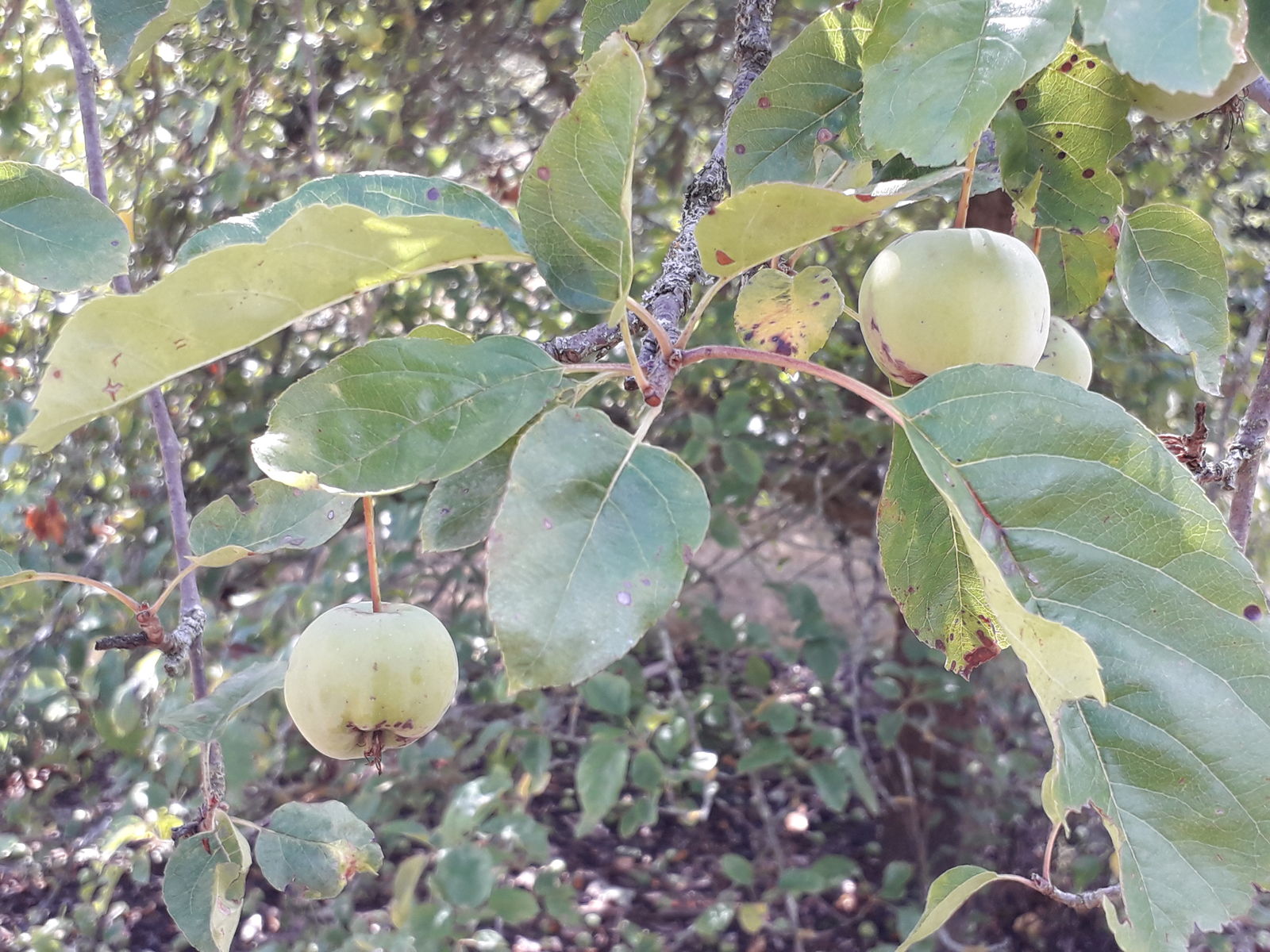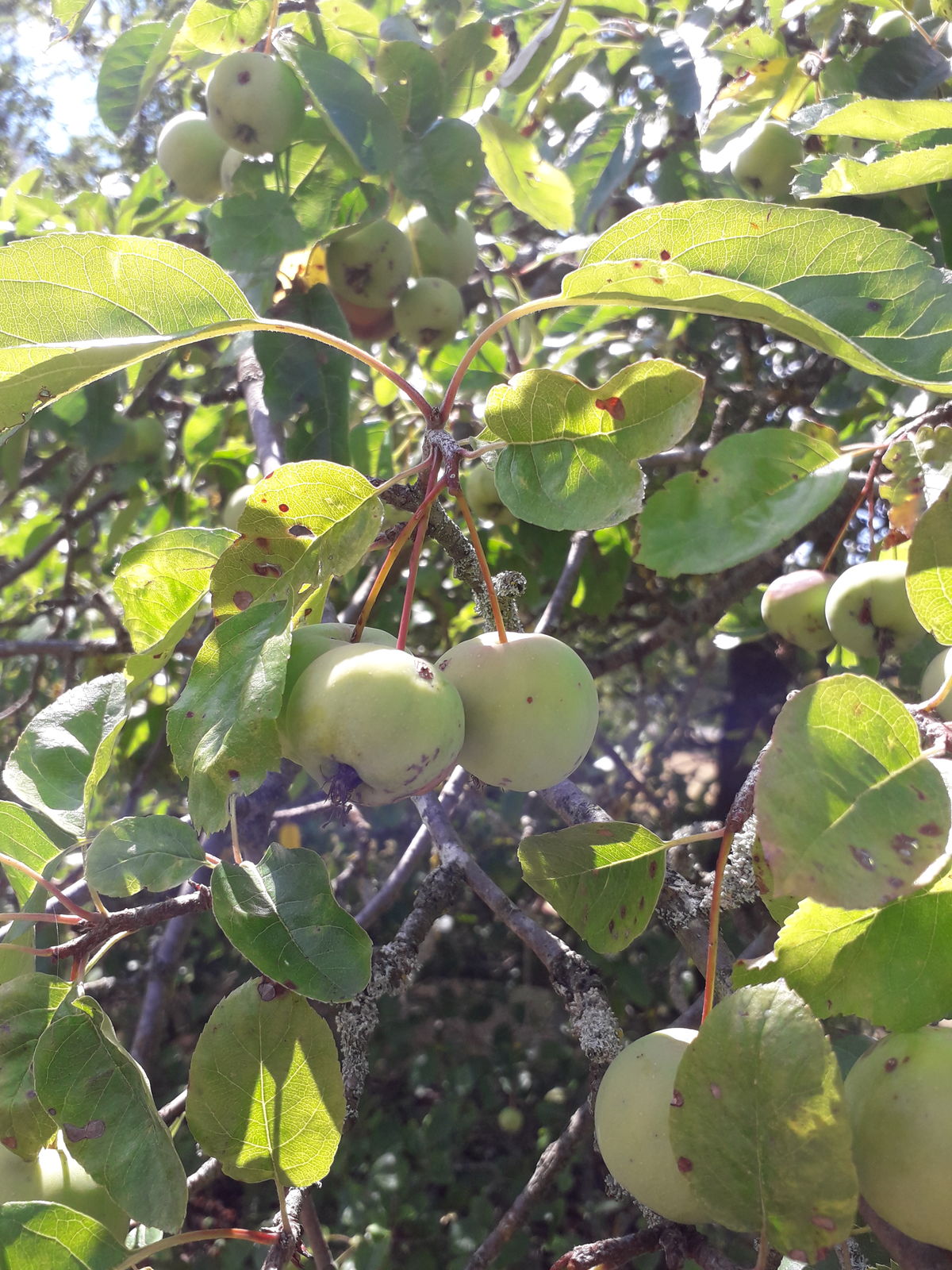Family: Rosaceae
Author: (Aiton) Michx.
Bibliography: Fl. Bor.-Amer. 1: 292 (1803)
Year: 1803
Status: accepted
Rank: species
Genus: Malus
Vegetable: False
Observations: NC. & E. U.S.A.
Description
The Southern crab apple, scientifically known as Malus angustifolia, is a notable species within the diverse Rosaceae family. First described in the early 19th century, this plant has a rich botanical history, with its classification dating back to its inclusion in the “Flora Boreali-Americana” published in 1803. The distinguished botanist, (Aiton) Michx., is credited with its formal botanical naming.
This small deciduous tree is native to the central and eastern regions of the United States, where it thrives particularly well. The Southern crab apple is beloved not only for its ecological contributions but also for its attractive appearance, especially when in bloom. The tree produces copious amounts of small, fragrant pink to white flowers, typically in the early spring, which are a sight to behold and a harbinger of the approaching warm season. These blossoms are crucial for pollinators, providing a valuable nectar source for bees and other insects.
As the flowering season progresses, the Southern crab apple develops its distinctive small, yellow to green fruits. Though they tend to be too tart for casual consumption, these fruits are a crucial food source for various wildlife, including birds and mammals. Moreover, they can be utilized in making preserves, jellies, and ciders, thereby holding culinary value as well.
The tree’s ornamental charm is paired with its practical benefits; it often serves as a hardy and resilient choice for gardens and landscapes, particularly in areas prone to less than ideal growing conditions. Its adaptability to different soil types and resistance to certain pests and diseases make it a valuable addition to cultivated environments.
In natural settings, Malus angustifolia plays a vital role in promoting biodiversity. It provides shelter and nourishment for numerous species, thus supporting local ecosystems. Additionally, its dense growth can help prevent soil erosion, showcasing its importance in environmental conservation efforts.
In summary, the Southern crab apple, Malus angustifolia, with its historical botanical roots and ecological significance, stands out as both a functional and beautiful component of the flora in the central and eastern United States. Its blossoms herald the arrival of spring, its fruits sustain wildlife and enrich culinary practices, and its overall presence nurtures the health of ecosystems, making it a plant worth recognizing and preserving.
Common Names
Eng: narrow-leaved crabapple, southern crab apple, southern crabapple
Deu: schmalblättriger apfel
En: Southern crab apple, Narrow-leaved crabapple, Southern crabapple
De: Schmalblättriger Apfel
Synonyms
- Pyrus angustifolia (Aiton)
- Malus angustifolia florepleno (Morel)
- Malus angustifolia var. puberula ((Rehder) Rehder)
- Chloromeles sempervirens ((Desf.) Decne.)
- Malus angustifolia f. pendula (Rehder)
- Malus ioensis var. spinosa (Rehder)
- Pyrus angustifolia var. puberula ((Rehder) L.H.Bailey)
- Malus coronaria var. puberula (Rehder)
- Pyrus coronaria var. angustifolia ((Aiton) Wenz.)
- Pyrus sempervirens ((Desf.) Willd.)
- Malus microcarpa macrantha (Carrière)
- Pyrus angustifolia var. spinosa ((Rehder) L.H.Bailey)
- Malus microcarpa kermesina (Carrière)
- Pyrus angustifolia bechtelii (Rehder)
- Pyrus angustifolia var. florepleno (Anon.)
- Malus sempervirens (Desf.)
- Malus microcarpa sempervirens ((Desf.) Carrière)
- Malus microcarpa cerasiformis (Carrière)
- Malus angustifolia var. spinosa ((Rehder) C.F.Reed)
- Pyrus ioensis var. spinosa ((Rehder) L.H.Bailey)
- Malus microcarpa turbinata (Carrière)
- Malus microcarpa jucunda (Carrière)
Distribution
- Alabama (native)
- Arkansas (native)
- Delaware (native)
- District of Columbia (native)
- Florida (native)
- Georgia (native)
- Illinois (native)
- Kentucky (native)
- Louisiana (native)
- Maryland (native)
- Mississippi (native)
- Missouri (native)
- New Jersey (native)
- North Carolina (native)
- Ohio (native)
- Pennsylvania (native)
- South Carolina (native)
- Tennessee (native)
- Virginia (native)
- West Virginia (native)
Additional Images
Leaf
Taken Mar 29, 2022 by Maarten Vanhove (cc-by-sa)
Taken Mar 29, 2022 by Maarten Vanhove (cc-by-sa)
Taken Apr 4, 2022 by Brad Kelley (cc-by-sa)
Taken Jun 11, 2021 by Heather Anne Walter (cc-by-sa)
Taken Aug 6, 2022 by Dawn Hill (cc-by-sa)
Bark
Taken Mar 29, 2022 by Maarten Vanhove (cc-by-sa)
Taken Apr 4, 2022 by Brad Kelley (cc-by-sa)
Habit
Taken Jan 1, 1900 by EOL − Smithsonian Institution, National Museum of Natural History, Department of Botany (cc-by-nc-sa)
Flower
Taken Jan 1, 1900 by EOL − Smithsonian Institution, National Museum of Natural History, Department of Botany (cc-by-nc-sa)

© copyright of the Board of Trustees of the Royal Botanic Gardens, Kew.

© copyright of the Board of Trustees of the Royal Botanic Gardens, Kew.

© copyright of the Board of Trustees of the Royal Botanic Gardens, Kew.
Sources
- WFO (No URL)
- GBIF (https://www.gbif.org/species/3001548)
- POWO (http://powo.science.kew.org/taxon/urn:lsid:ipni.org:names:1087697-2)
- PlantNet (https://identify.plantnet.org/species/the-plant-list/Malus angustifolia (Aiton) Michx.)
Specifications
Growth form>: Multiple Stem
Growth habit>: Tree, Shrub
Growth rate>: Moderate
Growth
Ph maximum: 7.5
Ph minimum: 5.0









